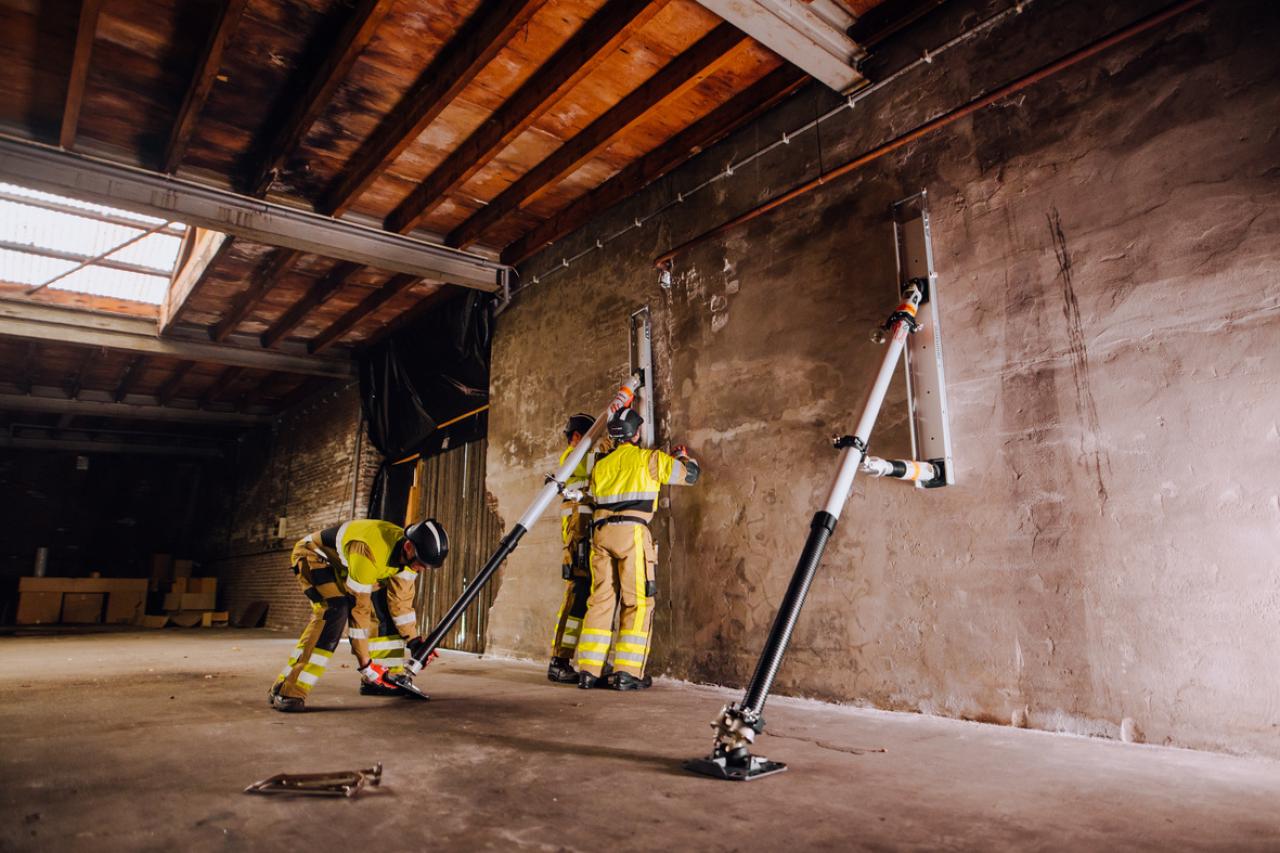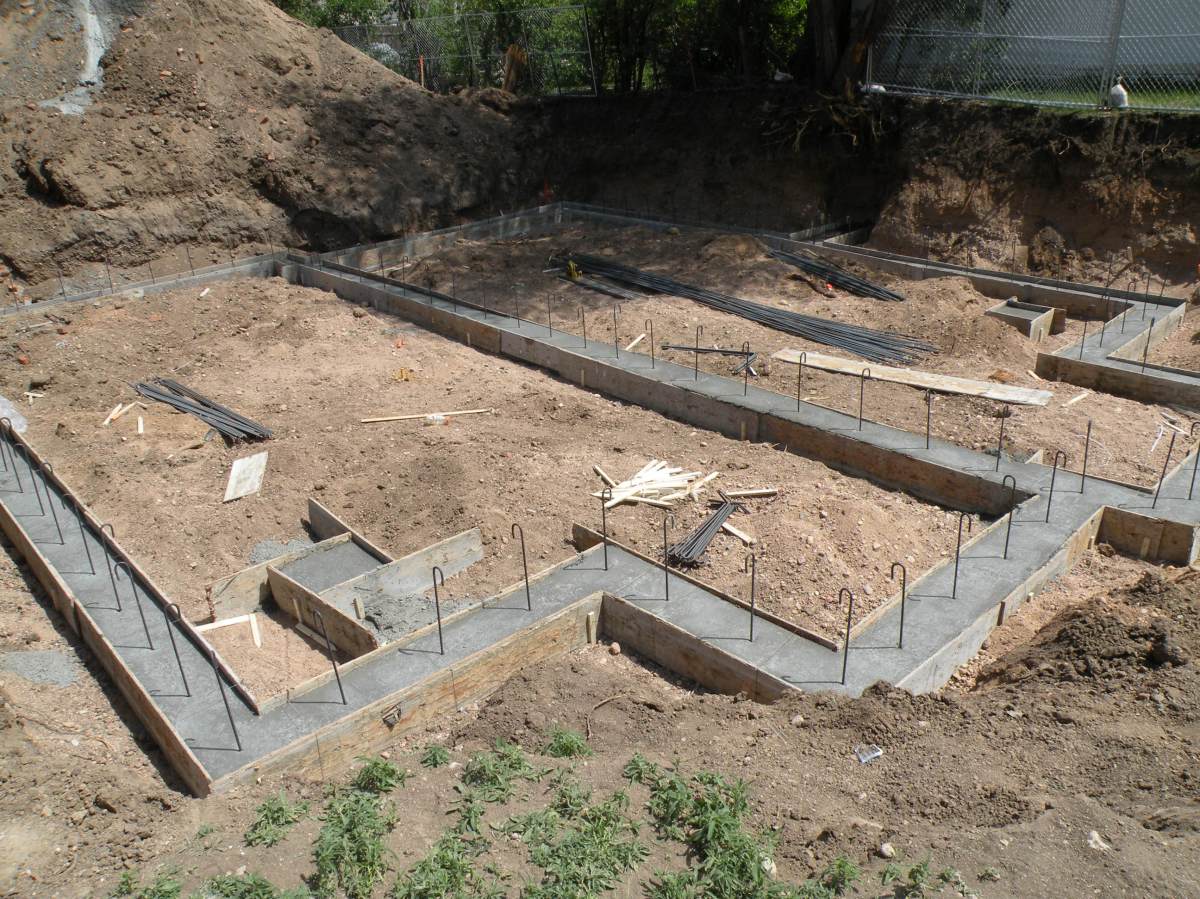Home>diy>Building & Construction>What Is A PCO In Construction


Building & Construction
What Is A PCO In Construction
Modified: December 7, 2023
Discover what a PCO is in the construction industry and its importance in building construction. Learn how PCOs ensure smooth project execution.
(Many of the links in this article redirect to a specific reviewed product. Your purchase of these products through affiliate links helps to generate commission for Storables.com, at no extra cost. Learn more)
Introduction
In the world of construction, there are numerous terms and acronyms that professionals use to communicate and streamline daily operations. One such term is PCO, which stands for Project Change Order. PCOs play a crucial role in the construction industry, and understanding their significance is essential for managing successful construction projects.
A Project Change Order (PCO) is a request to modify the scope, schedule, or cost of a construction project. It is typically initiated by the owner, architect, or contractor to address changes or modifications that need to be made after the project has commenced. PCOs are a common occurrence in the construction industry as unforeseen circumstances, design changes, and unforeseen conditions often arise during the project’s timeline.
The primary purpose of a PCO is to formalize and document any changes made to the original contract. This helps to ensure transparency, accountability, and overall project success. PCOs allow for flexibility and adaptability, enabling project stakeholders to address unforeseen challenges without compromising the quality, timeline, or budget of the construction project.
Implementing effective PCO management is crucial for the success of construction projects. It requires strong communication, collaboration, and documentation skills, as well as an in-depth understanding of the construction process. PCOs enable project teams to make informed decisions, manage risks, and maintain control over project scope, costs, and timelines.
Throughout this article, we will explore the importance of PCOs in construction projects and delve into the roles, responsibilities, and processes involved in managing PCOs effectively. We will also discuss the common challenges faced by PCOs and provide best practices for streamlining PCO management. By the end, you will have a comprehensive understanding of the significance of PCOs in construction and the strategies to ensure their successful management.
Key Takeaways:
- PCOs, or Project Change Orders, are crucial in construction projects for managing changes, maintaining project integrity, and ensuring transparency and accountability among stakeholders. Effective PCO management is essential for successful project execution.
- PCOs require meticulous documentation, thorough evaluation of proposed changes, and open communication among project stakeholders. By following best practices and embracing the significance of PCOs, construction professionals can navigate change effectively and achieve project success.
Read more: What Is Pre-Construction In Construction
Definition of PCO in Construction
In the construction industry, a Project Change Order (PCO) refers to a document that formally requests a change or modification to a construction project’s scope, schedule, or budget. PCOs are initiated to address unforeseen circumstances, design changes, or additional work that was not outlined in the original contract.
PCOs provide a structured and systematic approach to managing changes in construction projects. They serve as a written record to document and track alterations made to the project, ensuring transparency and accountability among project stakeholders.
When a change is requested, the responsible party submits a PCO to formalize the request and initiate the change management process. The PCO should include detailed information about the proposed change, including the reason for the change, the impact on the project’s scope, schedule, and budget, and any additional documentation or approvals required.
Upon receiving a PCO, the project team, including the owner, architect, and contractor, will review and evaluate the proposed change. This evaluation process involves assessing the feasibility of the change, its impact on the project’s overall objectives, and the associated costs and timeline adjustments. The team will then determine whether to approve or reject the PCO.
If the PCO is approved, it becomes a legally binding document and serves as a reference for the revised scope, schedule, and budget of the project. The change will then be incorporated into the project management system, and all parties involved will proceed accordingly.
It is important to note that PCOs should not be confused with project change directives, which are issued by the project owner without the prior approval of the contractor. PCOs require the consent of all involved parties, ensuring that changes are agreed upon and documented appropriately.
Overall, PCOs play a vital role in managing the scope, schedule, and budget of construction projects. They provide a standardized process for addressing changes and modifications, ensuring that project teams can adapt to unforeseen circumstances while maintaining control over the project’s progress. By using PCOs, construction professionals can effectively manage changes and ensure project success.
Importance of PCOs in Construction Projects
Project Change Orders (PCOs) are a fundamental aspect of construction project management. They serve as a mechanism to address changes, modifications, and unforeseen circumstances that can arise during the course of a project. The importance of PCOs in construction projects cannot be overstated, as they play a crucial role in maintaining project integrity, control, and success.
First and foremost, PCOs allow for proper documentation and communication of changes. Construction projects are dynamic, and it is not uncommon for circumstances to change or for design modifications to become necessary. PCOs provide a formalized and structured process to document these changes, ensuring that all project stakeholders are aware of the alterations being made. This documentation is vital for maintaining accountability, transparency, and legal compliance throughout the project. It helps to prevent disputes and provides a clear reference for future decision-making.
PCOs also play a significant role in managing project scope. As a project progresses, new requirements, changes in design, or evolving client expectations may emerge. Without a well-defined process for capturing and approving these changes, the project’s scope can easily expand beyond the original parameters, leading to delays, increased costs, and potential conflicts. PCOs provide a formal framework to assess and manage scope changes, allowing project teams to evaluate the impact of proposed changes and make informed decisions on whether to proceed with them.
Moreover, PCOs help in managing project costs. Construction projects operate within specific budgets, and any changes that impact the scope or design of the project can have financial implications. PCOs enable project teams to assess the cost implications of proposed changes, ensuring that proper consideration is given to budget constraints. By documenting and evaluating changes through PCOs, project teams can make informed decisions to control costs and prevent budget overruns.
Another important aspect of PCOs is their role in managing project timelines. Changes to project scope or design can disrupt the original schedule, leading to delays and potential contractual issues. PCOs facilitate the evaluation of proposed changes and their impact on the project timeline, allowing project teams to determine the feasibility of implementing the changes within the project’s constraints. By effectively managing PCOs, project timelines can be adjusted without compromising overall project delivery.
In summary, PCOs are essential for maintaining project integrity, controlling scope, managing costs, and meeting project timelines. By implementing a robust PCO process, construction professionals can effectively manage changes, maintain transparency and accountability, mitigate risks, and ensure the overall success of construction projects. PCOs provide a structured approach to address modifications, empowering project teams to adapt to evolving circumstances while maintaining control and delivering high-quality projects.
Roles and Responsibilities of PCOs
In construction projects, Project Change Orders (PCOs) are managed by individuals known as PCOs or Change Order Coordinators. These professionals play a critical role in facilitating effective change management and ensuring the smooth execution of construction projects. Their roles and responsibilities encompass various aspects of the PCO process, including communication, documentation, coordination, and analysis. Let’s explore the key roles and responsibilities of PCOs in construction projects.
1. Change Management: PCOs are responsible for managing the entire change management process. This includes receiving change requests from the project team, contractors, or clients, and initiating the PCO documentation process. They ensure that all necessary information is collected, and the proposed changes are properly documented and communicated to stakeholders.
2. Documentation and Record-Keeping: PCOs are responsible for maintaining accurate and detailed documentation of all change orders. This includes recording the change request, documenting the reasons for the change, assessing the impact on scope, schedule, and budget, and obtaining appropriate approvals. They ensure that all changes are properly documented for future reference and compliance purposes.
3. Cost Evaluation: PCOs analyze the cost implications of proposed changes. They work closely with estimators, project managers, and financial stakeholders to evaluate the financial impact of changes on the project budget. PCOs provide accurate cost estimates and ensure that changes are approved within the allocated budget or that proper budget adjustments are made.
4. Schedule Evaluation: PCOs assess the impact of changes on project timelines. They work in collaboration with schedulers and project managers to evaluate the effect of proposed changes on the project schedule. PCOs help identify potential schedule conflicts, dependencies, and resource constraints that may arise due to changes, ensuring that realistic timelines are set and adhered to.
5. Communication and Coordination: PCOs act as a liaison between various project stakeholders. They facilitate effective communication and coordination between the project team, subcontractors, suppliers, and clients. PCOs ensure that all parties involved are informed of any proposed changes, and they coordinate the necessary actions required to address the changes effectively.
6. Risk Management: PCOs identify and evaluate the potential risks associated with implementing changes. They work closely with risk management teams to assess the impact of proposed changes on project objectives, deliverables, and stakeholder satisfaction. PCOs help identify potential risks, develop mitigation strategies, and ensure that risks are managed effectively to minimize their impact on the project.
7. Compliance and Legal Considerations: PCOs ensure that all changes and associated documentation comply with legal and regulatory requirements. They work closely with legal teams to ensure that changes are properly documented, approved, and executed in accordance with the contract terms and applicable laws.
In summary, PCOs play a vital role in managing project changes, ensuring effective communication, maintaining documentation, evaluating costs and schedules, coordinating with stakeholders, managing risks, and ensuring compliance. Their expertise in change management contributes to the successful execution of construction projects, allowing for adaptability while maintaining control over scope, budget, and timelines.
When hiring a PCO (Project Control Officer) in construction, look for someone with strong organizational and communication skills, as well as experience in project management and construction processes. This will ensure effective coordination and control of the project.
PCO Process in Construction Projects
The PCO (Project Change Order) process is a structured and systematic approach used in construction projects to manage and document changes that occur during the project’s lifecycle. The PCO process ensures that changes are properly evaluated, communicated, and implemented while adhering to project objectives, scope, schedule, and budget. Let’s take a closer look at the typical steps involved in the PCO process.
1. Identification of Change: The first step in the PCO process is the identification of a change. This can come from various sources, including project team members, contractors, or clients. Changes can be related to scope, design, materials, or any other aspect of the project that requires modification.
2. Change Request: Once a change is identified, a formal change request is submitted. This request includes detailed information about the proposed change, including the reason for the change, the impact on the project’s objectives, and any supporting documentation that validates the need for the change.
3. Change Evaluation: After receiving the change request, the project team evaluates the proposed change. This involves assessing the impact on project scope, schedule, budget, and any other relevant factors. The evaluation considers the feasibility of implementing the change and the potential risks and benefits associated with it.
4. Cost and Schedule Assessment: During the change evaluation process, the project team assesses the cost and schedule implications of the proposed change. This includes estimating the additional costs and time required to implement the change and evaluating its impact on the overall project budget and timeline.
5. Approval Process: If the change is deemed necessary and feasible, it moves forward to the approval process. The responsible parties, such as the client, project manager, and other relevant stakeholders, review and approve the change. This ensures that all parties are in agreement and that the change aligns with the project’s objectives.
6. Documentation and Communication: Once the change is approved, it is documented in the official PCO document. This document includes all the relevant details about the change, including the reason for the change, the impact on scope, budget, and schedule, and any necessary contractual adjustments. The PCO is then communicated to all project stakeholders to ensure transparency and understanding of the approved change.
7. Implementation and Verification: The approved change is then implemented following the project’s change management procedures. This may involve updating project plans, revising contracts, coordinating with subcontractors or suppliers, or any other necessary actions to implement the change. After the change is implemented, it is verified to ensure that it meets the desired outcome and is properly integrated into the project.
8. Documentation and Reporting: Finally, the PCO and all related documentation are properly filed and recorded for future reference. This documentation serves as a record of the change and provides a basis for project reporting, audits, and potential legal disputes.
The PCO process is a vital component of construction projects, enabling proper change management, ensuring communication among stakeholders, and maintaining project control. By following this structured process, construction professionals can effectively address and document changes, ensuring project success and client satisfaction.
Read more: What Is Construction
Common Challenges Faced by PCOs
While Project Change Orders (PCOs) play a crucial role in managing changes in construction projects, they also come with their fair share of challenges. PCOs require careful attention to detail, effective communication, and collaboration among project stakeholders. Understanding and anticipating these challenges can help PCOs navigate potential obstacles and ensure successful change management. Let’s explore some common challenges faced by PCOs in construction projects.
1. Incomplete or Inaccurate Change Requests: One common challenge is receiving change requests that lack necessary information or are not adequately documented. PCOs rely on clear and comprehensive change requests to properly evaluate and implement changes. Insufficient information can lead to delays in the process and potential misunderstandings among project stakeholders.
2. Scope Creep: Scope creep refers to the gradual expansion of a project’s scope beyond its original boundaries. It can be challenging for PCOs to manage scope creep, as it can impact the project schedule, budget, and overall objectives. PCOs must carefully assess and evaluate scope changes to ensure they align with the project’s goals and do not compromise its success.
3. Lack of Timely Communication: Timely communication is crucial throughout the PCO process. Delays in communication between project team members, contractors, and clients can result in missed deadlines, increased costs, and conflicts. PCOs must establish effective communication channels and ensure that relevant stakeholders are promptly informed of any change requests or updates.
4. Budget Constraints: Managing changes within the project budget can be a major challenge for PCOs. Changes often come with additional costs, and it can be difficult to balance budget limitations while addressing necessary modifications. PCOs must carefully evaluate cost implications, explore cost-saving alternatives, and communicate budgetary constraints to stakeholders to ensure realistic and feasible decision-making.
5. Schedule Implications: Changes can disrupt project schedules, leading to delays and potential contractual issues. PCOs need to assess the impact of proposed changes on the project timeline and coordinate with project managers and schedulers to determine the feasibility of incorporating the changes without compromising the overall project schedule. It requires careful planning and coordination to minimize schedule disruptions.
6. Resistance to Change: Change can be met with resistance within project teams or among stakeholders. Some team members may be resistant to change due to concerns about added workload, increased complexity, or uncertainty. PCOs must address concerns, communicate the benefits of the proposed changes, and foster a culture of openness and collaboration to mitigate resistance and gain buy-in from all parties involved.
7. Legal and Contractual Considerations: PCOs need to navigate legal and contractual requirements when implementing changes. Contractual agreements, regulations, and specifications may dictate the process and documentation necessary for PCOs. Failure to adhere to these requirements can result in costly disputes or non-compliance issues. PCOs must ensure compliance with legal and contractual obligations throughout the change management process.
By being aware of these common challenges, PCOs can proactively address them, implement effective strategies, and maintain control over the change management process. Clear communication, meticulous documentation, and collaborative problem-solving are key to overcoming these challenges and ensuring successful PCO management in construction projects.
Best Practices for Effective PCO Management
Managing Project Change Orders (PCOs) effectively is essential for successful construction project execution. By implementing best practices, PCOs can be managed efficiently, ensuring effective communication, streamlined processes, and successful change management. Here are some key best practices for effective PCO management in construction projects.
1. Establish a Clear Change Management Process: Develop a well-defined and documented change management process specific to your project. Clearly outline the steps involved in requesting, evaluating, approving, and implementing changes. This process should include roles and responsibilities, communication channels, and timelines to ensure consistency and accountability throughout the PCO process.
2. Maintain Open and Transparent Communication: Effective communication is crucial for successful PCO management. Foster an environment of open and transparent communication among project stakeholders, including clients, contractors, and project teams. Regularly provide updates on the status of change requests, approvals, and implementation. Timely communication helps to prevent misunderstandings, delays, and conflicts.
3. Document and Review Change Requests Thoroughly: Ensure that change requests are documented thoroughly and accurately. Include all relevant details, such as the reason for the change, impact assessment, supporting documentation, and required approvals. Review change requests diligently to ensure completeness, feasibility, and alignment with project objectives. Incomplete or ambiguous change requests can lead to delays and misinterpretations.
4. Evaluate Impact on Scope, Budget, and Schedule: Conduct a thorough evaluation of the proposed changes to assess their impact on project scope, budget, and schedule. Involve the necessary stakeholders, such as estimators, project managers, and schedulers, to determine the cost and schedule implications. This evaluation process helps to ensure that changes are aligned with the project’s objectives and can be accommodated within the allocated resources.
5. Obtain Clear and Timely Approvals: Obtain timely approvals for PCOs to prevent delays in implementation. Clearly communicate the impact of changes to the relevant parties and seek their approval promptly. Adopt a system or document management tool that facilitates easy tracking of approvals and maintains a record of the approved PCOs for reference and audits.
6. Regularly Monitor and Update Project Documentation: Keep project documentation updated to reflect approved PCOs. Regularly review and revise project plans, contracts, schedules, and budgets to incorporate the approved changes. This helps to maintain accuracy, avoid confusion, and ensure that all project stakeholders are aware of the updated project parameters.
7. Monitor and Control Costs: Continuously monitor and control costs associated with PCOs. Regularly track expenses, compare them against the approved budget, and implement necessary adjustments. Collaborate with the finance and procurement teams to ensure transparency and accuracy in cost management.
8. Learn from Lessons Learned: Take the opportunity to learn from past PCO experiences. Conduct regular project reviews to identify areas for improvement in the PCO management process. Analyze mistakes or challenges encountered in previous PCOs and implement corrective actions to enhance future PCO management.
By implementing these best practices, construction professionals can effectively manage PCOs, ensure efficient change management, and minimize disruptions to project scope, budget, and schedule. With clear processes, open communication, and careful evaluation, PCO management becomes an integral part of successful construction project execution.
Conclusion
Project Change Orders (PCOs) are essential in the construction industry for managing changes, mitigating risks, and ensuring the successful execution of construction projects. PCOs provide a structured and systematic approach to address changes in project scope, schedule, and budget, enabling construction professionals to adapt to unforeseen circumstances while maintaining control and transparency.
Throughout this article, we have explored the significance of PCOs in construction projects. We have discussed the definition of PCOs, their importance in maintaining project integrity, and the roles and responsibilities of PCOs in managing changes. Additionally, we have covered the PCO process, common challenges faced by PCOs, and best practices for effective PCO management.
PCO management requires effective communication, meticulous documentation, and thorough evaluation of proposed changes. It involves maintaining open channels of communication among project stakeholders and conducting a comprehensive assessment of the impact on scope, budget, and schedule. By following best practices, such as establishing a clear change management process, maintaining transparency, and monitoring costs, PCOs can be managed efficiently throughout the project lifecycle.
Ultimately, effective PCO management contributes to the successful delivery of construction projects. It allows for adaptability while maintaining control over project objectives, ensuring that changes are properly evaluated, communicated, and implemented. By embracing the importance of PCOs and adhering to best practices, construction professionals can navigate change effectively, minimize risks, and achieve project success.
In conclusion, PCOs are a vital component of construction project management, providing the framework to address changes and modifications. By leveraging the PCO process, construction professionals can adapt to evolving circumstances, maintain project control, and deliver high-quality projects that meet client expectations. By applying the knowledge and best practices outlined in this article, construction professionals can effectively manage PCOs and foster success in their construction projects.
Frequently Asked Questions about What Is A PCO In Construction
Was this page helpful?
At Storables.com, we guarantee accurate and reliable information. Our content, validated by Expert Board Contributors, is crafted following stringent Editorial Policies. We're committed to providing you with well-researched, expert-backed insights for all your informational needs.















0 thoughts on “What Is A PCO In Construction”